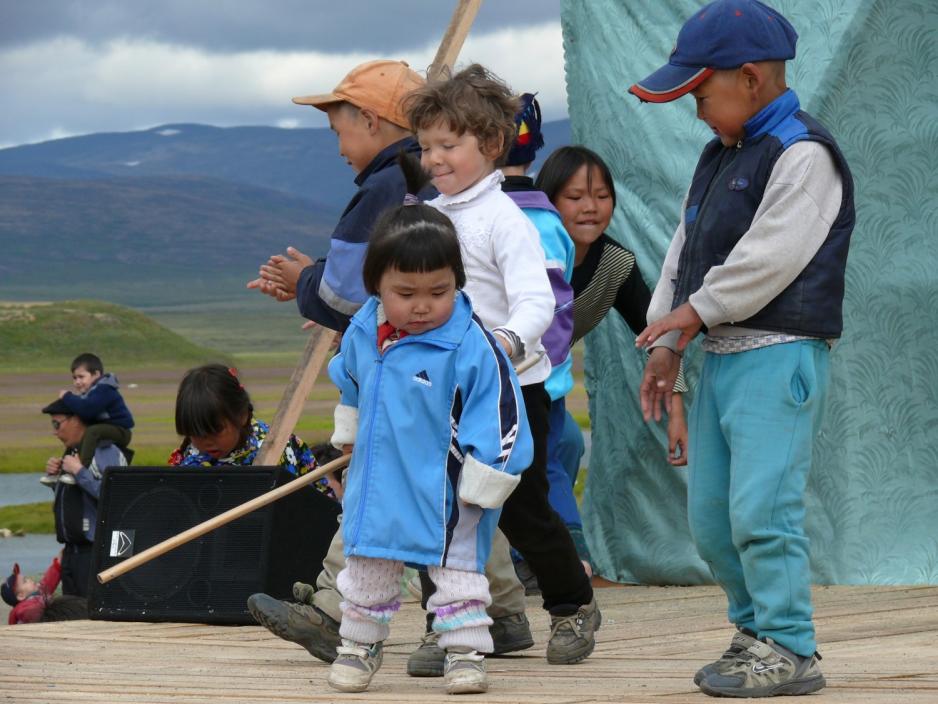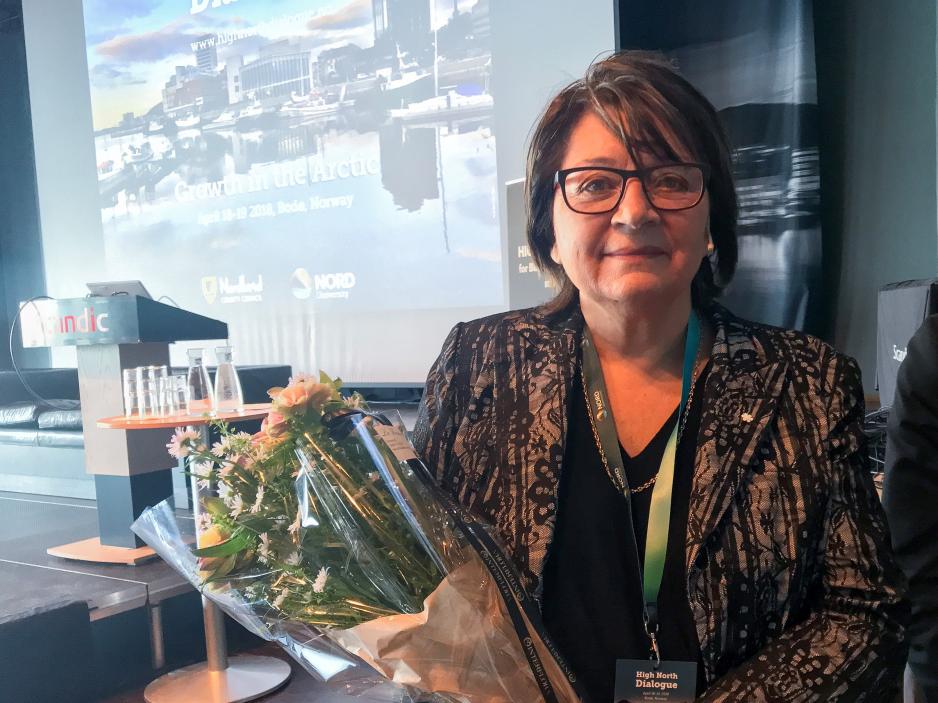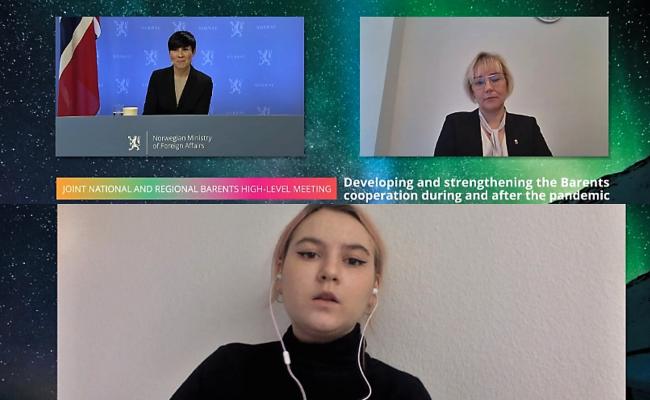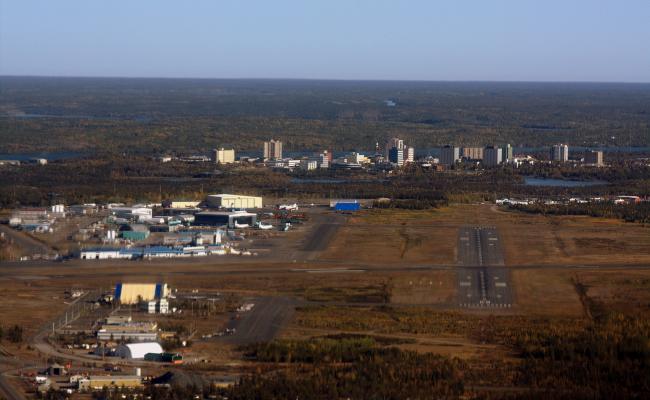US Senator Fears Impact of the Pandemic: – Gravely Concerning and Pretty Dark

The 2015 report from AMAP addressed for the first time how small indigenous communities manage to adapt to climate change. The consequences of climate change are described as an "existential threat" to the indigenous people of the Arctic. (Photo: AMAP)
The impacts of COVID-19 in the Arctic have exaggerated existing vulnerabilities such as remoteness, access to health services, and there is an increase in youth suicide. It is the unveiling of a broken system. And it is taking lives.
The Corona pandemic has highlighted the infrastructural deficits in the Arctic. To properly fight the pandemic, there had to be an increase in the health system.
According to Dr Liza Mack, Director of the Aleut International Association in America, that did not happen. What unveiled during the pandemic was the opposite.
"We started lockdown in March and during winter in Alaska, there are some places we can only get around to by air or sea, weather permitted", said Dr Mack while digitally attending the Arctic Frontiers conference this week.
From hard to impossible
When lockdown was imposed with travel restrictions, the largest rural airline in Alaska, RavnAir Group, declared bankruptcy. Staying connected went from hard to impossible.
"It was scary. We did not have an air service, nor could we get mail or medicine, and were even more isolated than before the pandemic", Mack said.
This shows how dependent rural Alaska is on outside infrastructure.
At risk
In addition to being cut off from the rest of the world during the crisis, the shift to online school and home office did not go well for all inhabitants of the north. If anything, the challenges grew.
"More families isolated at home is a difficult situation for native communities. We spend time together in larger groups as a core value", said Mack.
The tight family structure and multi-generational housing solution in native communities put the elders at risk of infection and exposure to the virus through the youth.
Suicide among Canadian Natives
A Statistics Canada report found that Indigenous people die by suicide at a rate three times as high as non-Indigenous Canadians. But there are limitations to the findings that likely result in underestimations of actual rates.
The highest rates of Indigenous suicide are seen in youth and young adults, between the ages of 15 and 24. For First Nations people, the rate for these ages is 6.2 times higher than for non-Indigenous population in the same age range; for Inuit people, the rate is 23.9 times higher.
Feeling the unknown
During the debate, moderator Eva Bratholm raised the question about whether remote villages are easier to protect against infection. Liza Mack refutes this.
"In Alaska, people are often forced to travel for medical reasons or other matters. It only takes one person to infect the whole community. Living off the grid, the virus spreads quickly. So there is a vulnerability to isolation and remoteness", Mack said and pointed to the 266 positive Covid cases in the remote Aleutian Islands seafood plant.
"It is dark and isolated and we are feeling the unknowns", said Liza Mack with a grave face.
The new buzz word
Similar stories are being told throughout the Arctic, often followed by the new buzzword used to describe Arctic communities: Resilience.
Part of the Arctic Frontiers' agenda this year is to examine challenges in addressing societal health in Arctic communities.
Are resilience practices in Arctic communities an “export” that should be shared with the rest of the world? Or are they just trying to survive yet another crisis?
Losing the youth
Alaska Senator Lisa Murkowski (R) tells a story of a fire two weeks ago, in the Alaskan village of Tuluksak, a place not connected by roads during winter. The fire led to loss of water provision facilities, leaving 400 inhabitants without water.
"The frozen rivers offers no help, as mining activity has contaminated the water. To combat the virus, it is important to keep clean. And without water, it is an impossible task. This is the Arctic during winter", said Murkowski during the conference.
The logistics of responding is a challenge. The reality is that small communities like this have few possibilities when the crisis hit.
"The small health clinic is exhausted because of corona. The runway is closed due to snow, and the person whose job it was to clear the runway, is sick. So no water can be flown in", said the senator.
Suicide among Native Alaskans
Alaska has the third-highest suicide rate in the United States, right under Montana and Wyoming. According to a 2015 survey released by the Centers for Disease Control, 23 out of every 10,000 people in Alaska die by suicide.
Fears for the children
And as schools are closed, she fears for mental health and the health of the children of the Arctic.
Add to that the Alaskan's memories of the Spanish Flu pandemic that wiped out whole families in 1918, and it leaves the senator very concerned.
"My fear is that the delayed impact of isolation and fear will manifest in issues like accelerated youth suicide and domestic violence. It is gravely concerning and pretty dark", the Senator says with a grave face.
She worries about losing a generation to fear of corona, climate change and isolation.
Exaggerated by corona
Mary Simon, former Canadian Ambassador for Circumpolar Affairs, observes the same pattern in the Canadian Arctic.
Jus like Senator Murkowski, she sees that kids are losing hope, a situation that has been exaggerated by Corona.
"The pandemic has had a mental health impact made more severe because of the lack of support", said Simon.
A global issue
Canadian Inuit challenges range from climate change to food security, lack of education and family issues.
"We need a commitment to change on a global level", Simon states and pleas with the Government to tackle mental health issues in the north that are driving Arctic youth to suicide.
"This is the stark reality and it hits me deep down with every new suicide. It must be possible to get the help needed. We need psychiatrists trained in Indigenous culture. And we need to make education a cornerstone, along with access to health services for students".
Part of the problem might be the loss of indigenous languages.
"When you lose your language, you lose part of your identity", says Mary Simon, herself a Canadian Inuit.
Mental health has worsened since physical distancing was imposed:
Six in ten Indigenous participants report that their mental health has worsened since the onset of physical distancing.
Among Indigenous crowdsource participants, 38% reported fair or poor mental health, 32% reported good mental health, and 31% reported excellent or very good mental health.
When asked how their mental health has changed since physical distancing began, 60% of Indigenous participants indicated that their mental health has become “somewhat worse” or “much worse”.
Source: Statisitcs Canada.
Higher suicide rates
Senator Murkowski agrees, and says that mental health issues for Alaskan natives have been overlooked.
"The Alaskan native suicide rate for youth is higher than before and even higher amongst men. We have not done enough", says Murkowski.
Although the concept of telehealth is now accessible, it is not enough. Especially for what the elders are concerned about.
Also read
No help - No support
Mary Simon criticizes the clear deficiency in health services following the despair of a suicide attempt.
"When a young person attempts to commit suicide and does not succeed, health authorities often place the person in a clinic for three days until they “calm down”. Then they are sent home, with no help. No support. Telehealth is promising, but in Canada, connectivity is not good enough".
Liza Murkowski puts her hope on the vaccine to bring light to Arctic communities. And here, the world gets to witness the much talked-about resilience of the people who live in the north.
"They are taking control, hauling the vaccines on dog sleds and snow mobiles and small planes. The vaccines are being set right on the spot".
US Native And Indigenous And Mental Health:
19 percent of the U.S. Native American or Alaskan Native - nearly 830,000 people - have reported having a mental illness in the last year.
MHA estimates that “Native/Indigenous people in America report experiencing serious psychological distress 2.5 times more than the general population over a month’s time.”
“The suicide death rate for Native/Indigenous people in America between the ages of 15–19 is more than double that of non-Hispanic whites.”
A new hope
With a new hope, new solutions have to follow. If anything, the Corona pandemic has showed the world that we can not go back to how it was. The Arctic needs economic opportunities and education.
"We cannot turn back time to the traditional economy. We are being affected by climate change, and we are part of a larger, global community. The youth want to bring this new community into their life", says Murkowski, and decides to throw a torch into the debate:
"With climate change comes additional opportunities. The reduction in sea ice will cause increased tourism and more shipping. Climate change will bring new industries to some of these small communities", the senator states.
She thinks new solutions can co-exist with traditional life styles.
"But we need affordable housing and sustainable energy, to start with".
Indigenous women report high stress and anxiety:
Women and girls have been disproportionately affected by public health emergencies, with greater physical and mental health risks due to multiple caregiving burdens, risks of gender-based violence, and economic vulnerabilities.
In the case of Canadian Indigenous women participants, their mental health is being particularly impacted by the COVID-19 pandemic.
46% of Indigenous women and 32% of Indigenous men described most of their days as “quite a bit stressful” or “extremely stressful”.
Higher percentages of Indigenous women than men reported symptoms consistent with moderate or severe generalized anxiety, with 48% of Indigenous women participants reporting such symptoms, compared to 31% of Indigenous men.
Higher percentages of Indigenous women than Indigenous men (64% compared to 54%) reported that their mental health was “somewhat worse” or “much worse” since the start of physical distancing.
Source: Statistics Canada







